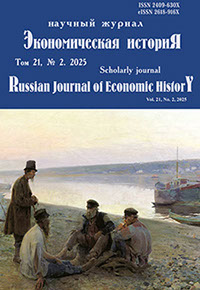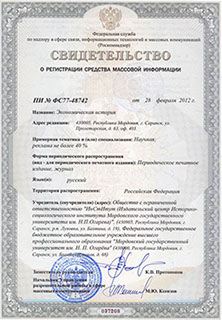Экономическая историЯ
Russian Journal of Economic History
ISSN 2409-630X (Print)
ISSN 2618-916X (Online)
Expert board:
- Scientific Council of RAS on economic history;
- Research and Educational Center «The economic history of Central Russia and the Middle Volga region» of Ogarev Mordovia State University;
- Center of Economic History of Lomonosov Moscow State University
Navigation
Alexey K. Kirillov1, Alexander I. Svirepov2
1 Institute of History of the Siberian Branch of the Russian Academy of Sciences, Novosibirsk State University (Novosibirsk, Russia),
e-mail: alkir.nsk@gmail.com
2 Novosibirsk State University (Novosibirsk, Russia),
e-mail: a.svirepov@g.nsu.ru
Inequality of Peasant Incomes at the Beginning of the 20th century According to west Siberian tax Distributions
(Bogorodskoye County, Tomsk District)
Abstract
Introduction. The authors consider the long-debated question of the degree of inequality in Russia before the revolution on the basis of the sources that have not previously been used to solve this problem. The subject of attention is inequality among peasants – that part of pre-revolutionary society for which finding information about income amount is especially difficult.
Materials and Methods. In the absence of direct data on peasant incomes, a source of indirect data was taken for study. These are the distribution resolutions adopted annually in each village – documents on the distribution of the total amount of taxes for the village on individual payers. They make it possible to assess inequality within a given village using mathematical methods. Three neighbor villages near the provincial city of Tomsk were selected for the study out of 500 distribution resolutions found in the archive.
Results. Analysis of these documents yielded Gini index figures ranging from 0.3 to 0.4, and with correction factors ranging from 0.4 to 0.5. Inequality figures will increase by an additional five hundredths if we take into account the income of individual taxpayers (eligible workers) rather than individual households.
Discussion and Conclusion. The resulting figures of peasant inequality in the pre-revolutionary Russia work against the lowest and the highest estimates proposed earlier. Our data support average estimates that place the late imperial Russia among countries with neither a serene nor a catastrophic situation. The figures were not absolutely constant: even over a short period of time (6 years from 1902 to 1908), fluctuations in indices are noticeable, which are consistent with the successful development of agricultural households in the selected villages. The difference in indices between the villages, which differed in the degree of development of trade and the presence of pubs, can also be considered significant. In general, the article opens up the possibility of studying this topic using distribution resolutions from different regions.
Keywords: Late Imperial Russia; Tax statistics; Gini index; measuring inequality; Siberian peasantry.
For citation: Kirillov A. K., Svirepov A. I. Inequality of Peasant Incomes at the Beginning of the 20th century According to west Siberian tax Distributions (Bogorodskoye County, Tomsk District). Ekonomicheskaya istoriya = Russian Journal of Economic History. 2025; 21(2): 109–123. (In Russ.). DOI: 10.24412/2409-630X.069.021.202502.109-123.
Acknowledgements: The research was supported by the Russian Scientific Fund grant, project no. 21-18-00509 “Evolution of income and property inequality of the Russian population: from the Great reforms to the “Velikiy perelom” (statistical and geoinformation analysis)” (led by Leonid I. Borodkin).
Authors are grateful to Anastasia G. Karavayeva and the team of the Tomsk region State Archive workers without whose generous support this research could not come true.
© Ogarev Mordovia State University. History and Sociology Institute, 2017
68, Of. 411, Bolshevistskaya St., 430005, The editorial office of the scholarly journal «Russian Journal of Economic History»
Tel.: (8342) 24-25-90; 27-07-11, Fax: (8342) 24-25-90, E-mail: jurnal-econom-hist@isi.mrsu.ru
Designed by A. Napalkov, Email: napalkov@isi.mrsu.ru


